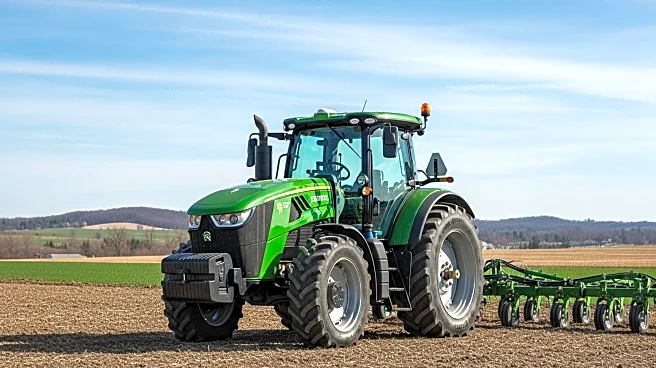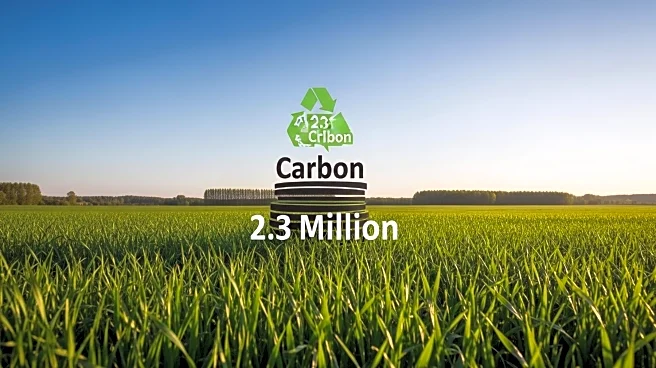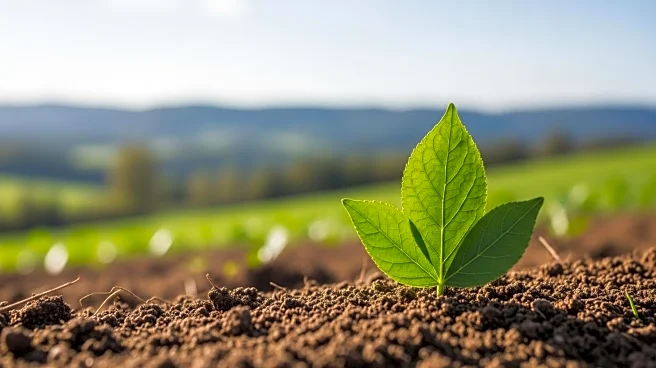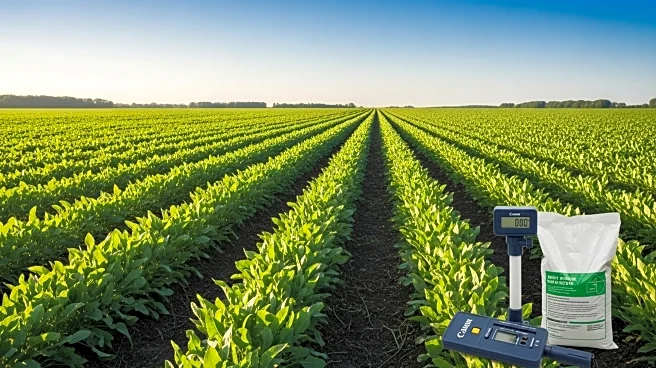What's Happening?
Agreena has achieved verification for its AgreenaCarbon Project under Verra's Verified Carbon Standard, utilizing methodology VM0042 for Improved Agricultural Land Management. This verification enables Agreena to issue over 2.3 million Verified Carbon Units (VCUs). The project spans 1.6 million hectares of regeneratively farmed land across European markets, reducing 1.2 million tonnes of CO2 through improved practices and 1.1 million tonnes through soil sequestration. Simon Haldrup, CEO at Agreena, stated that the verification confirms Agreena's leadership in regenerative agriculture, demonstrating that soil carbon can be measured, verified, and trusted at scale.
Why It's Important?
The verification of Agreena's project is significant as it underscores the potential of regenerative agriculture to contribute to carbon reduction efforts. By quantifying and verifying carbon sequestration, Agreena provides a model for sustainable farming practices that can be scaled globally. This initiative not only supports environmental goals but also offers economic benefits to farmers through carbon credits. The project highlights the growing importance of sustainable agriculture in addressing climate change and the role of verification standards in ensuring the credibility of carbon reduction claims.
What's Next?
Agreena's digital MRV system aims to enhance traceability, allowing buyers to view country-level impacts and select portfolios weighted towards reductions or removals. This could lead to increased adoption of regenerative practices as farmers and buyers recognize the verified benefits. The success of Agreena's project may encourage other agricultural entities to pursue similar verification, potentially expanding the market for carbon credits and further integrating sustainable practices into mainstream agriculture.
Beyond the Headlines
The verification process also raises questions about the scalability of regenerative agriculture and the challenges of measuring and verifying soil carbon at large scales. As more projects seek verification, the demand for robust methodologies and standards will grow, potentially driving innovation in agricultural practices and carbon measurement technologies.











